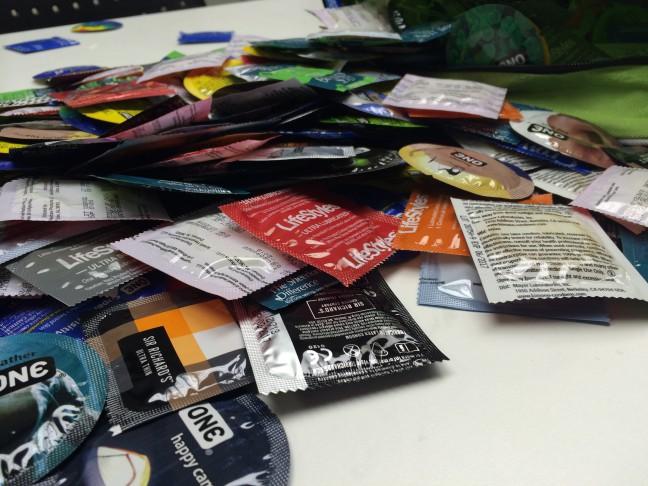Despite the prevalence of sexually transmitted infections among young people — half of new STIs are in folks under age 25 — few students are comfortable discussing their STI status.
The negative stigmas associated with STIs only harm us; discomfort discourages open communication and therefore prevention of infections.
In the past, sexual health care experts primarily used the acronym “STD” (Sexually Transmitted Disease). But since many sexually transmitted ailments are treatable, curable and asymptomatic, Hump Day uses STI (Sexually Transmitted Infection) instead.
Get yourself tested
Luckily for University of Wisconsin students, University Health Services provides free STI screening. Those in monogamous relationships should get screened annually, but people with more partners should be screened two to three times a year. UHS offers urine tests and vaginal swabs to test for chlamydia and gonorrhea. For those in high-risk demographics, they perform blood tests for HIV.
Unfortunately, no test exists for HPV at the moment, but doctors may test for dysplasia (abnormal cells) in the cervix to indicate cancer as a result of HPV.
Despite the absence of a test, one vaccine does protect against HPV: Gardasil. Doctors recommend people of both sexes to get Gardasil between the ages of 9 and 26. The vaccine protects against nine genital wart and cancer-causing strains. Each Gardasil shot (3 total) costs $130 at UHS, but the Dane County Health Department offers residents the vaccination for free.
Slay the stigma
Despite the fact that STIs are extremely common, most people struggle to get screened or discuss STI status with potential sexual partners. Although many people perceive STIs as a rarity isolated to certain communities, all sorts of folks from different backgrounds and sexual histories test positive for an STI at one point or another.
One UW student, who asked to remain anonymous, came in contact with the STI molluscum contagiosum and could not escape the stigma.
“I felt dirty for having an STI, even though … it’s very common and being ashamed doesn’t make any sense,” she said. “I definitely felt I would be stigmatized and judged if anyone knew I had an STI.”
The shame that surrounds STIs doesn’t originates from symptoms or biology, but from their association with sex. But, treating STIs for what they are — a simple infection — minimizes this negativity and irrational fear.
STI status doesn’t indicate quality of character or past sexual behaviors. There is no “type” of person who contracts STIs. Remember that coming into contact with an STI hardly means the end of the world, or even of a sexually active lifestyle. It’s important to be aware of status rather than ignore it out of fear of testing positive.
Having open, honest and understanding conversations about STIs is essential to informed consent — be sure to ask when a partner was last screened. While many people are comfortable discussing birth control, few realize how important barrier methods are in preventing STIs; whipping out condoms isn’t only a way to prevent a surprise nine months down the road.
Another Madison resident, who also asked to remain anonymous, said she often ran into issues when her partners equated condom-use only as a method of birth control.
“[I wish] it were easier to talk to … partners about it,” she said. “I tell them they have to wear a condom and the only thing any guy brings up is … birth control, as if pregnancy is the only risk factor.”
The best way to eradicate stigma is through education, awareness and removing negative connotations used to discuss STIs.
When describing STI status, don’t use words like “clean,” because this implies testing positive for an STI makes someone “dirty.” Get tested and prepare to have discussions about STIs with potential partners, even in the heat of the moment. After all, there’s nothing sexier than safety.














